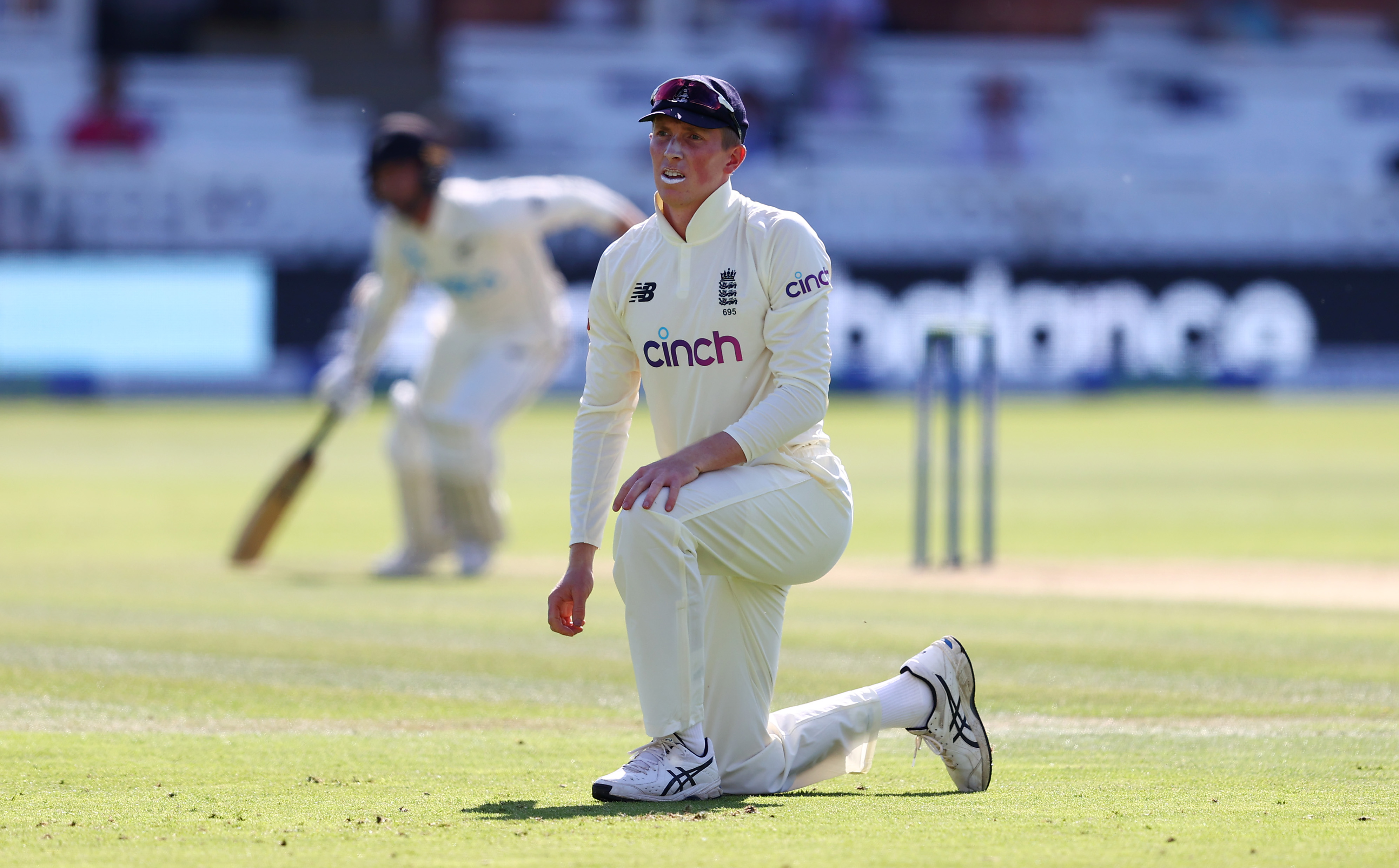Zak Crawley needs to be careful — the 267 will only buy him so much time
Athletes across sports are judged by numbers and cricket is no different. Numbers, in most cases, are a fair reflection of the athlete’s ability and so the phenomenon of judging a player by their statistics is something that is universally accepted.

Yet, every now and then, there are outliers. There are certain athletes whose numbers don’t do justice to their ability. Until the morning of August 21, 2020, Zak Crawley was that player.
By the age of 21 Crawley found himself being a regular in the English Test side but his ascension to the highest level of the sport was…….bizarre. In an era where batsmen averaging 35 in international cricket are branded mediocre, Crawley broke his way into the English Test set-up by averaging in the low 30s in the domestic circuit. Worse, prior to making his Test debut, Crawley had played a vast majority of his games in the second tier of English domestic cricket, the County Championship second division, and had averaged a mere 27.6.
And in the games he played in the first division, despite scoring 820 runs, 34.16 was all he could average - numbers worse than a retired Alastair Cook and wasted talents Daniel James Bell-Drummond and Tom Kohler-Cadmore. His selection did not make sense. Until the morning of August 21, 2020.
On that chilly morning in Southampton, you could see exactly what the scouts and the selectors saw. You could see why Crawley was a player that transcended numbers; why he was a generational talent worth backing to the moon. England, after losing Rory Burns early, and after slumping to 127/4 on a wicket that gave batsmen no margin for error, had no business ending Day 1 on 332/4. Yet they did. And while Jos Buttler did play his hand, the complexion of the entire Test had been changed by one man whose batting swagger was reminiscent of KP, and whose unswerving concentration and determination mirrored Sir Alastair Cook. That morning in Southampton felt like the dawn of a new era.
But as much as the 267 in Southampton helped Crawley announce himself to the world stage and enabled him to establish himself in the English side as the long-term #3, now, a year on, one cannot help but wonder if it’s getting to the point where it feels that Crawley owes his place in the side to that very morning in Southampton.
As he showed the world a year ago, Crawley can bat - very well. And not just against Pakistan. In just the third Test of his career, the youngster took apart Vernon Philander and Anrich Nortje on a pacy Centurion wicket that would have made the WACA of old times proud; three innings later, he top-scored for the side in the second innings of the Southampton against the Windies, in which England had conceded a 114-run first-innings lead.
But 13 Tests into his career, consistency continues to remain non-existent in Crawley’s game. Now into this third season of international cricket, Crawley has, rather worryingly, posted back-to-back scores of 30 or more just twice in his career. 63% of all knocks in his Test career have been scores below 15, and, astonishingly, that one innings in Southampton has accounted for 39% of all runs he’s scored in Test cricket.
But what will concern England and Silverwood equally, however, is the absurdly low number of balls Crawley is facing. Minus the marathon in Southampton, Crawley has faced an average of just 42.3 balls per innings in his Test career. Since post the double ton versus Pakistan, this figure has dropped to an alarming 25.6 - though he’s batted predominantly as an opener, mostly in the sub-continent - and in the first Test against the Kiwis at Lord’s, 35 balls was all he lasted across two innings.
In fact, since his Test debut back in November 2019, of all Top 3 batsmen to have scored a minimum of 500 runs, no batsman has faced fewer deliveries per innings on average than Crawley, whose 59.10 - this includes the 267 vs Pakistan - is 10 fewer than the second-worst batsman in the list, Dean Elgar.
Some may, as a counter-argument, bring up the fact that Crawley, by nature, is an attacking batsman; i.e. he does not face enough balls because he gets his runs quickly. But this is not true. In the same list, five batsmen, including Elgar and Karunaratne, two openers regarded as grafters, have scored their runs quicker than Crawley. And, barring Elgar, all those above him in the list have faced at least 20 more balls per innings on average, debunking the argument that Crawley faces fewer balls owing to his style of play.
But while Crawley perishing early is not thaaaat problematic for the side if he opens, the implications are far worse when he bats at No.3, for it will expose the team’s best batsman, Joe Root, early in the innings. In the first innings at Lord’s, for instance, Root walked in to bat as early as the 7th over of the innings. While he did survive the onslaught on that particular instance, England will only be shooting themselves in the foot by making it a habit. As Nasser Hussain noted in his column for the Daily Mail, the English Top-3 should be doing a much better job in shielding their best batsman.
“England need to protect their best batsman, and they know that the return of Ben Stokes and Jos Buttler will strengthen their middle order. Right now, though, the top-order needs to show a bit more nous,” Hussain had written in his column for Daily Mail.
Both Burns and Sibley showed the nous Nasser talked about, at Lord’s, though not in the same innings. While Burns was the last batsman to be dismissed in the first innings, Sibley, in the second, ensured that an England defeat was off the table. In contrast, however, Crawley showed no substance across both innings, twice perishing by needlessly throwing his hands at a wide outswinger, when he had no reason to be swinging at them.
It goes without saying that Crawley, currently, is enduring the worst phase of his Test career. Across his last 10 innings, the 23-year-old has averaged 10.60 and has been dismissed in single digits eight times - that's where the issue lies. As much as the two dismissals against Southee were due to a lapse in concentration, they were also shots played by a man desperately searching for runs. The concern for England, however, will be that Crawley will really have no domestic experience to fall back on and get himself out of the rut.
Burns, for instance, endured a similar rotten run not too long ago, but he went back to Surrey, scored tonnes of runs and used the first-class experience in his favour to conquer his demons at the international level. Crawley, however, is someone who is yet to even taste consistent success in domestic cricket. Never in his career has Crawley averaged over 35 in a first-class campaign, and the 2021 County season was no different. 33.45 was all he averaged across 13 innings and five batsmen faced more balls per innings than his 52.23.
Both Jordan Cox and Ollie Robinson - rookies in comparison to Crawley - considerably out-performed him to the extent that at no point did Crawley feel like the most important batsman for Kent. Indeed, Crawley is very much still learning. It is worth noting that the Test at Lord’s was his first in England since the 267 he scored in Southampton. And yes, in terms of potential and ceiling, there arguably are no better batting prospects in the country. But that double century can only buy him so much time.
The ECB began ‘project rebuild’ post Ashes 2019 with the vision of having a starting XI strong enough to beat Australia in two years time but, as things stand, no one can say with certainty that Crawley deserves to be a part of that XI. The five Tests against India will most certainly turn out to be Crawley’s audition, but, in order to be there in the first place, he just might need to put up a reasonable showing at Edgbaston. Otherwise, Crawley, his credibility in the bank and a potential career would be in ruins.

Comments
Sign up or log in to your account to leave comments and reactions
0 Comments